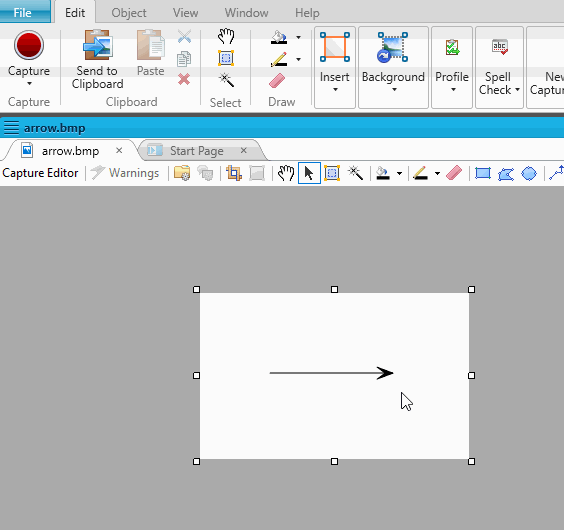Setting the Arrows for a Line
When you add a line to
The following steps pertain to an arrow created from the line tool (see Adding Lines), not a graphics arrow.
[Menu Proxy — Headings — Online — Depth3 ]
How to Set Arrows for a Line
- Open an image that has a line added to it.
- Double-click the line.
-
In the properties dialog, select the Arrows tab and modify the position, size, or color of the arrow.
Modify the Position of the Arrow
- In the Heads section, select the location(s) in the line where you want to place the head arrow(s). You can place the arrow at the head, tail, center, or both ends of the line. You can also specify that multiple arrows should be placed throughout the line. If you do not want an arrow, select None.
- In the Tails section, select the location(s) in the line where you want to place the tails arrow(s). You can place the arrow at the head, tail, center, or both ends of the line. You can also specify that multiple arrows should be placed throughout the line. If you do not want an arrow, select None.
Modify the Size of the Arrow
In the Length, Center Length, and Width field(s), enter the appropriate sizes in pixels.
Modify the Color of the Arrow
In the Color field(s), click the down arrow and select a color for the arrow. To see advanced color options, select More colors.
- Click OK.
- Click
 to save your work.
to save your work.

Note A very useful tool when working with objects is a palette, which lets you store objects for future use. For example, if you are including callouts with some images, chances are that you'll want to use the same look and feel for all of the callouts you create. Instead of creating new callouts from scratch each time or copying them from other images, you can create an initial model callout and then add it to a palette. Then, when you're ready to use a callout in another image, you can just drag your model callout from the palette to the image (and make minor changes, such as the text, from there). See Palettes.
What's Next?
If necessary, you can continue editing the image (e.g., adding objects, effects, a callout; cropping the image; resizing the image). Otherwise, you can finalize the image by saving it. See Editing Images.
